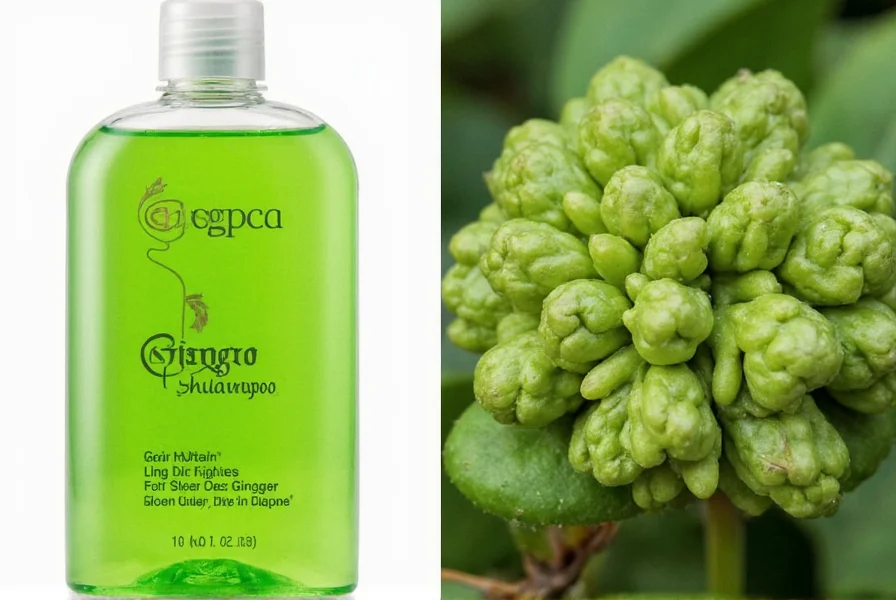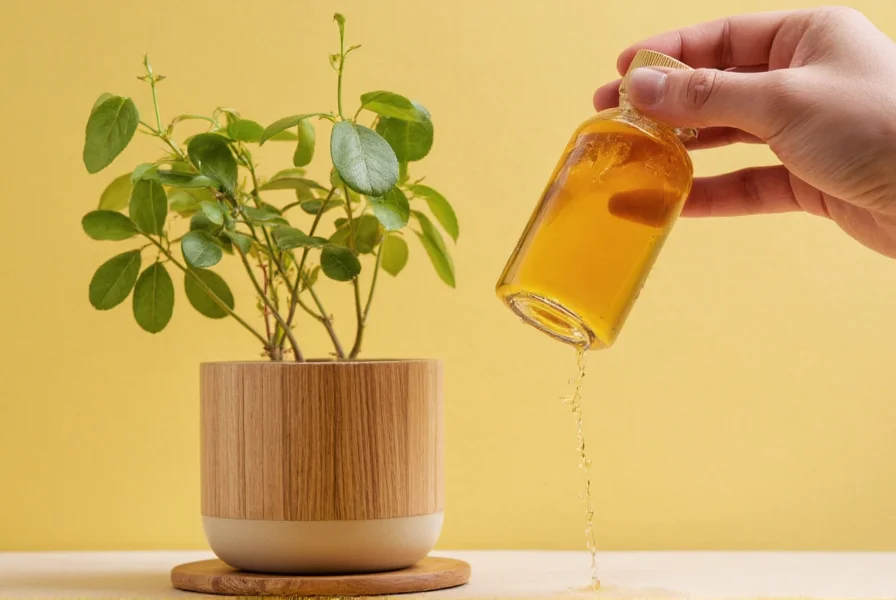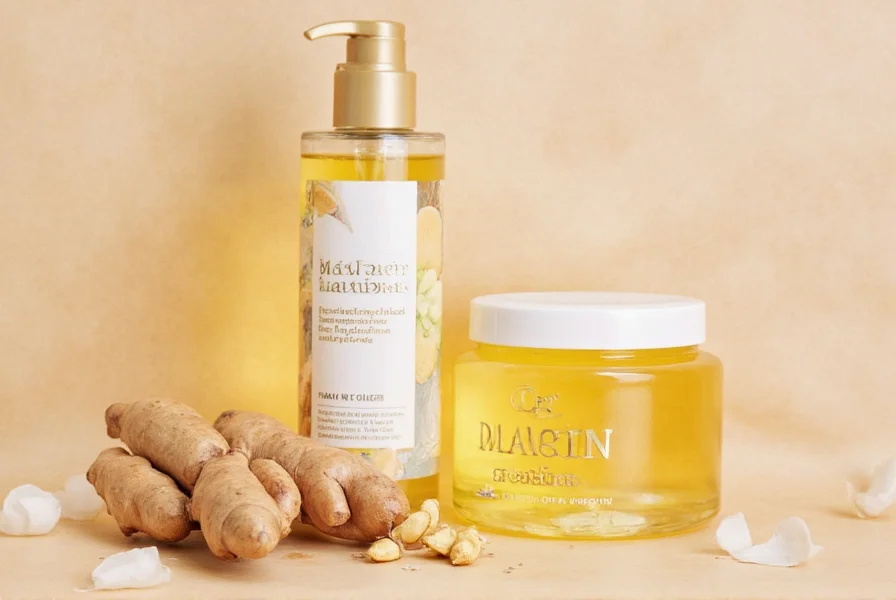Ginger has become increasingly popular in natural hair care products due to its purported benefits for scalp health and hair growth. However, many consumers misunderstand the botanical source of this ingredient, searching for a mythical "ginger shampoo plant" when the reality is much simpler. The ginger used in shampoos originates from the same Zingiber officinale plant found in your kitchen spice rack.
Understanding Ginger in Hair Care Products
When you see "ginger" listed in shampoo ingredients, it refers to components derived from Zingiber officinale rhizomes. These underground stems contain bioactive compounds like gingerols and shogaols that give ginger its characteristic properties. In hair care, manufacturers use various forms of ginger:
- Zingiber officinale root extract (most common in shampoos)
- Ginger essential oil (less common due to potency)
- Ginger powder (sometimes used in DIY formulations)
- Ginger water or infusion
The confusion about a "ginger shampoo plant" likely stems from marketing language that doesn't specify the botanical source. Some brands may use terms like "ginger plant extract" without clarifying that it comes from the standard culinary ginger plant.
Botanical Profile of Zingiber officinale
Zingiber officinale belongs to the Zingiberaceae family, which includes other aromatic plants like turmeric and cardamom. This tropical perennial plant features:
| Characteristic | Description |
|---|---|
| Plant Type | Herbaceous perennial |
| Height | 60-90 cm (2-3 feet) |
| Key Part Used | Rhizomes (underground stems) |
| Active Compounds | Gingerols, shogaols, zingerone |
| Primary Growing Regions | India, China, Nigeria, Thailand |
The rhizomes are harvested when the plant is 8-10 months old, then washed, peeled, and processed for various applications. For hair care products, manufacturers typically create extracts through methods like steam distillation, solvent extraction, or cold pressing.

How Ginger Benefits Hair and Scalp
Research suggests several potential benefits of ginger for hair health, though more clinical studies specific to hair care applications are needed. The current understanding includes:
- Improved circulation: Gingerols may stimulate blood flow to the scalp when applied topically, potentially supporting hair follicle health
- Anti-inflammatory properties: May help reduce scalp inflammation that can contribute to hair loss
- Antioxidant effects: Protects hair follicles from oxidative stress
- Natural antimicrobial action: Helps maintain a healthy scalp microbiome
A 2020 study published in the Journal of Cosmetic Dermatology found that topical application of ginger extract showed promising results for hair growth in animal models, though human clinical trials remain limited. When looking for ginger shampoo ingredients, check for Zingiber officinale root extract as the specific botanical name.
Common Misconceptions About Ginger in Hair Products
Several misconceptions surround ginger in hair care that contribute to the "ginger shampoo plant" confusion:
- Misconception: There's a special variety of ginger grown exclusively for hair products
Reality: The same Zingiber officinale used in cooking provides ingredients for hair care - Misconception: "Ginger plant" refers to a different species
Reality: No distinct "ginger shampoo plant" species exists in botanical classification - Misconception: All ginger products contain the same concentration of active compounds
Reality: Potency varies significantly based on extraction method and plant source
Identifying Quality Ginger Ingredients in Shampoos
When evaluating shampoos containing ginger, look for these indicators of quality:
- Specific botanical name Zingiber officinale rather than just "ginger extract"
- Clear indication of the part used (root/rhizome extract)
- Position in the ingredient list (higher position indicates greater concentration)
- Additional supporting ingredients that complement ginger's effects
Be wary of products making exaggerated claims about hair growth without scientific backing. While ginger shows promise for scalp health, it's not a miracle solution for hair loss. Understanding the botanical source of ginger in hair products helps consumers make informed choices about natural hair care ingredients.

Other Plants Sometimes Confused with Ginger
Several plants in the Zingiberaceae family share visual similarities with true ginger, leading to potential confusion:
- Galangal (Alpinia galanga): Often called "Thai ginger" but is a different species with distinct properties
- Turmeric (Curcuma longa): Related plant with yellow rhizomes sometimes used in hair masks
- Lesser galangal (Alpinia officinarum): Another relative sometimes substituted for ginger
While these plants share some chemical compounds with true ginger, they have different profiles and effects. When searching for ginger shampoo ingredients, ensure the product specifies Zingiber officinale rather than these related plants.
Frequently Asked Questions
Is there a specific plant called the ginger shampoo plant?
No, there is no distinct botanical species known as the "ginger shampoo plant." All ginger used in hair care products comes from Zingiber officinale, the same plant used for culinary and medicinal purposes worldwide. The rhizomes of this plant are processed to create extracts used in shampoos and other hair care formulations.
What part of the ginger plant is used in shampoos?
Shampoos use extracts from the rhizomes (underground stems) of the Zingiber officinale plant. These rhizomes contain the highest concentration of bioactive compounds like gingerols that provide the purported benefits for scalp health. The specific ingredient listing typically appears as "Zingiber officinale root extract" on product labels.
How can I verify if a shampoo contains real ginger extract?
Check the ingredient list for the specific botanical name "Zingiber officinale root extract." Quality products will specify both the scientific name and the plant part used. Be cautious of products that simply say "ginger extract" without botanical specification, as this could indicate lower quality or potentially different plant sources. Higher placement in the ingredient list generally indicates a greater concentration of the ingredient.
Does ginger in shampoo really promote hair growth?
Research suggests ginger may support hair health through improved scalp circulation and anti-inflammatory effects, but scientific evidence for significant hair growth promotion in humans remains limited. A 2020 study in the Journal of Cosmetic Dermatology showed promising results in animal models, but more human clinical trials are needed. Ginger can contribute to a healthy scalp environment, which is important for optimal hair growth, but it's not a guaranteed solution for hair loss.
Can I make my own ginger shampoo at home?
Yes, you can create a simple ginger-infused shampoo by adding fresh ginger extract to a base shampoo. Grate fresh ginger, steep it in warm water or a carrier oil for several hours, then strain and mix with your regular shampoo. However, homemade versions won't have the standardized concentration or preservation systems of commercial products, so they should be used immediately and stored refrigerated. For consistent results and proper formulation, commercially prepared ginger shampoos with specified Zingiber officinale extract concentrations are generally more reliable.











 浙公网安备
33010002000092号
浙公网安备
33010002000092号 浙B2-20120091-4
浙B2-20120091-4